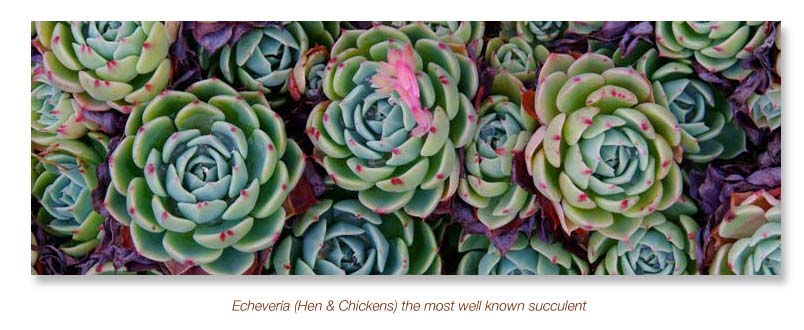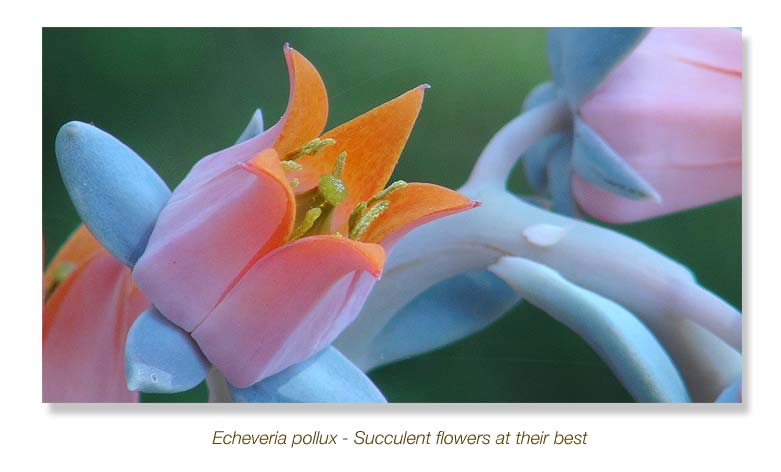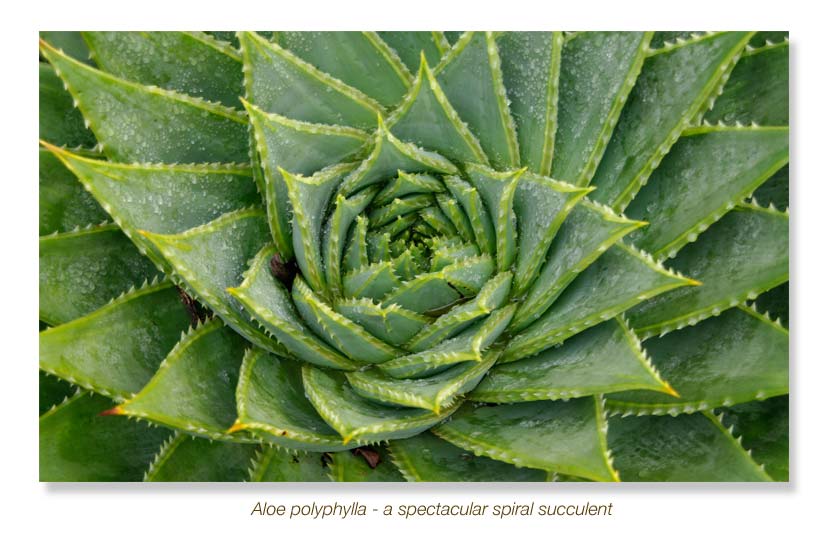
Succulents are so drought-resitant because they store water within their body cells to use when needed – while regular plants use their roots to draw up moisture from the soil as needed. In effect they rely upon the soil to store water, while succulents are self-sufficient.
Succulents do tend to be quite efficient in using water, often having tough skins that don’t allow easy evaporation, but they do need water, just like any living thing, to get by.
Yet the common message about succulents is ‘Don’t Water Them’, which seems quite counter-intuitive, but when you understand how they store water then it’s easier to understand.
 How Succulents Survive:
How Succulents Survive:
After a watering session, succulents take up water into every cell until the plant is fully hydrated. It's a bit like a fully inflated tyre, it bulges, taught and firm.
Over time that water gets used up internally, gradually reducing the hydrostatic pressure within the cells of the plant.
The external clue is a softening of the flesh, it becomes a little floppy, sometimes stems or leaves softening to the point that they will droop. When it becomes severe the skin will wrinkle as the cells within loose pressure and ‘deflate’.
During this period, between being fully watered . . . and needing water, succulents like their roots to be dry and for the soil to be light and airy.
This is why succulents like a coarse and open soil to live in – the addition of pumice and vermiculite to your potting mix will help create the ideal environment for them. Good drainage holes are important too – more than one is best so a simple blockage won’t stop the water draining away.
But contrary to the ‘Succulents Don’t Like Water’ sentiment, of course they do like and need water, but it is when and how you deliver it that is important.
When to Water:
Firstly, not often. As mentioned above they need dry periods in between waterings. Roots need time to dry right out, they can then access vitally important oxygen from their open soils.
How to Water:
Then, when you do give them a drink, it needs to be from below.
Of course in nature they get rained on from above but in the ‘un-natural’ environment of pots on your window-sill, they can easily get over-moist and then rot will set in, often followed swiftly by death.
Watering from above often causes the water to travel down the inside edge of the pot, leaving the central soil quite dry and not allowing the plant opportunity to suck some up.
Soils can also become hydro-phobic, which means they repel water, causing it to puddle on the surface and encouraging rot around the plant collar.
The best way to add moisture is from the bottom – place the pot in a saucer, bowl or shallow bucket of water to allow it to rise up through the soil by natural wicking. This may take some time to adequately moisten the soil, top to bottom, maybe up to an hour. Don’t leave it too long.
Then take it out and leave it to drain well on a raised or rough surface before placing it back in its regular position.
How to Tell When to Water:
Generally most succulents will be quite happy with many weeks between waterings. Some can go longer, up to months, it depends on their size and type as well as their ambient temperature and exposure to direct sunlight.
The best way to tell is by close observation. Does it look thirsty? Give it a gentle squeeze, is it a little flaccid? If it looks a bit deflated (with water) then give it a drink, if not, then don’t. I may seem counter-intuitive, but if a succulent doesn’t look thirsty then it isn’t.

Succulents are the Camels of the Plant World:
Succulents, and of course their cousins the Cactii, are the camels of the plant world, they continually surprise humans with their resistance to drought.
